Buyers Guide Aston Martin DB7
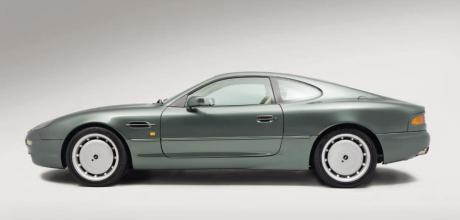
The chances are that there’s an Aston Martin or two in your dream garage, but with marque values going through the roof in recent years, the only realistic way that you’re going to buy into the brand is with a DB7. It’s the Aston Martin that remains resolutely affordable to buy, if not necessarily to run. The DB7 is the car that saved the brand, because when it burst onto the scene in the mid-1990s, production from Aston’s Newport Pagnell factory had slowed to a trickle. The company was a basket case that needed massive investment, which new owner Ford could provide.
ULTIMATE GUIDE Aston Martin DB7
Words: Richard Dredge
Pictures: John Colley
ASTON MARTIN DB7: ultimate guide to buying and owning
The DB7 was the star of the show when it was unveiled at the 1993 Geneva Salon, with its lithe, muscular shape which was universally admired. It was the work of Ian Callum, working for TWR, which had decided to develop a replacement for theJaguar XJS. But when Ford opted to go with its in-houseJaguar XK8 X100 design instead, TWR had a beautiful grand tourer that was all dressed up with nowhere to go. Ian Callum took out his crayons once more and tweaked the design to turn the Jaguar into an Aston, which looked sensational despite its XJS heritage.
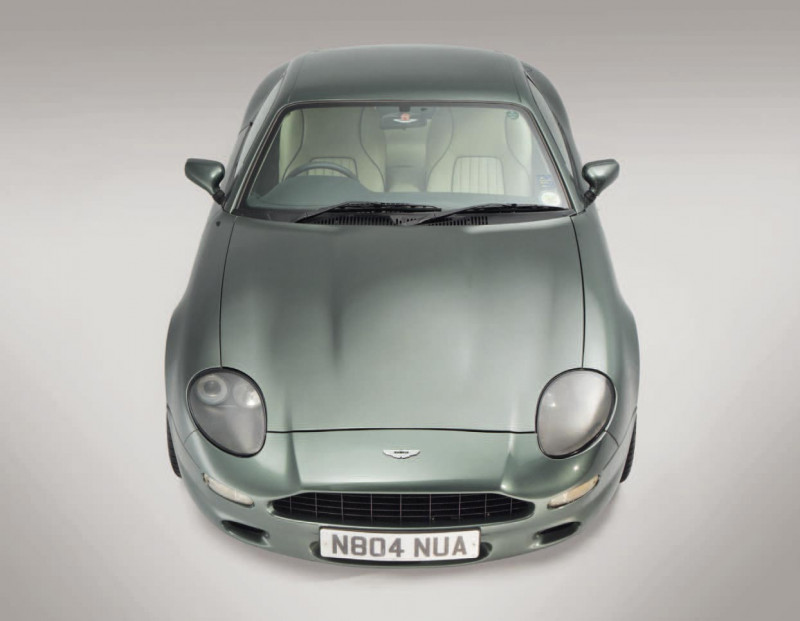
It was those aged Jaguar underpinnings that led to the first DB7 reviews being less than glowing, with reviewers saying that the ergonomics, build quality and braking all needed work. As a result, the DB7 Series 2 (1997 model year) car which was released in July 1996, was a big improvement. However, while Aston Martin created a car that was more worthy of the badge, it wasn’t until the V12-engined Vantage of 1999 that the DB7 finally came of age. Even then, it wasn’t until the final incarnation arrived, the GT, that the DB7 could really give its key rivals a run for their money dynamically.
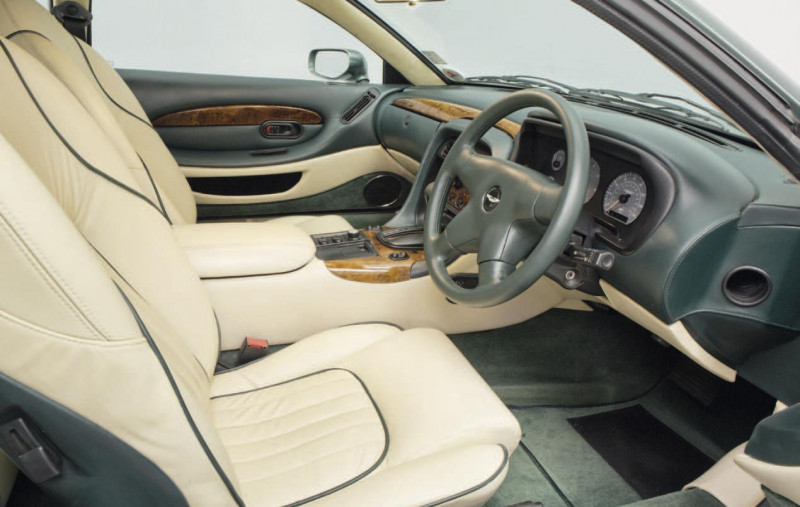
Relatively readily available, the DB7 retains just the right amount of exclusivity while there are still lots to choose from. However, the original supercharged six-cylinder DB7 is rarer than you might think, with just 2461 examples built, including 885 Volantes. The Vantage is much more common, with 4100 produced, around half of which were drop tops. You need to work out which flavour you want, as there are open or closed cars, six-cylinder or V12 models and manuals or autos, in any combination.
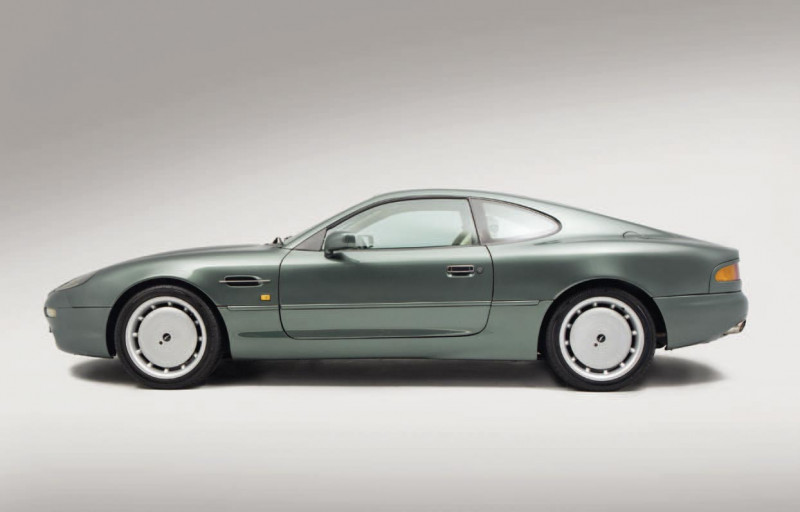
One thing to note with this guide, is that forums often use the shorthand i6 (for in-line six) and V12 for the six- and V12-powered cars respectively. These aren’t official terms though; Aston Martin used DB7 and DB7 Vantage instead. For clarity and variety we’re using i6 or six-cylinder, along with V12 or DB7 Vantage. So do try to keep up, Bond…
THE DB7 MARKET
DB7 expert Derek Campbell comments: “There used to be a big gap between six- and 12-cylinder cars, but that’s narrowed appreciably in recent years. Buyers have latched on to the fact that although the Vantage is better to drive and more thoroughly engineered than its earlier counterpart, the running costs for these later models are also a lot higher. Added to the greater simplicity and lower running costs is the rarity factor; not only were six-cylinder cars made in smaller numbers, but the lower values that they’ve endured for most of their lives also mean they’ve been the first to be broken.”
Low-mileage cars attract a premium, as do those that have had few owners, come with a full service history, and haven’t been messed with. Lots of DB7s have been cherished all their lives, but many have been neglected, so each iteration has a wide spread of values, with the cheapest being the six-cylinder coupé. These start at £20,000, although there are DB7s available for less. Buy one of these and the chances are that it’ll need thousands spent on it to bring it up to a decent condition.”
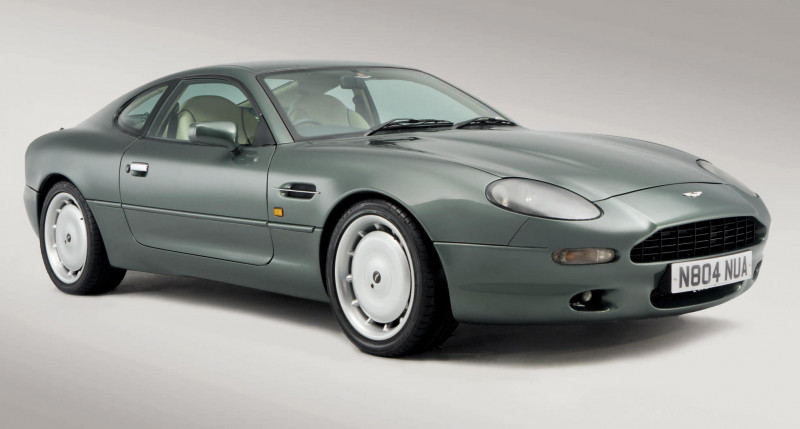
Although Volantes aren’t especially sought after, they still carry a premium over an equivalent coupé. As a result the cheapest open DB7 fetches £25,000; the best examples are worth £35,000, compared with £30,000 for a superb six-cylinder coupé. However, whereas you’ll pay £5000 extra for an open-topped six-cylinder DB7 over its tin-top alternative, the premium for V12 models is more like £3000. So while a Vantage coupé is worth between £22,000 and £35,000, a Vantage Volante fetches £25,000 to £38,000; exceptional cars command a premium though.
Derek adds: “The GTA doesn’t have any performance benefit over a DB7 Vantage auto. But well cared for GTAs are now recognised as being a limited-edition last hurrah, so they’re now fetching up to 25% more than an equivalent DB7 Vantage, which makes the best examples worth about £45,000. Pick of the bunch is the manual-gearbox GT, with its uprated V12. These models are worth £55,000 to £65,000, and with just 84 made in right-hand drive, there’s not much chance of values falling significantly.”
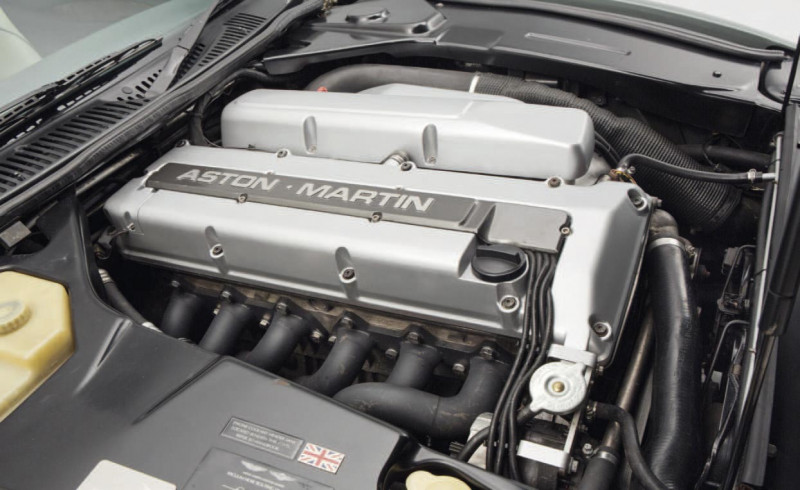
Manual-gearbox DB7s are in the minority, and whereas buyers generally used to want autos, it’s the manuals that are now the most highly prized, which is why they fetch an extra 10% or so. Derek tells us: “When new, there was no price difference between the two transmissions. Most DB7 buyers were used to aMercedes-Benz SL R129 orBMW 8 Series E31 with an automatic transmission, so that’s what they opted for when buying an Aston Martin. The ZF auto ‘box fitted to the Vantage is still superb, whereas the GM400 unit in the six-cylinder cars isn’t quite as impressive, although it’s perfectly good. One thing to bear in mind is that manual-gearbox DB7s are usually bought by enthusiasts who really look after their cars. Plenty of autos are cherished too, but a DB7 with a manual transmission is more likely to have had love and attention lavished on it.”
KEY CHECKS: BODYWORK
Although the DB7’s construction is conventional with its steel monocoque, the front wings and bootlid were made of resin-impregnated composite; in March 1996 Aston switched from plastic bonnets to steel. Six-cylinder DB7s were better rustproofed than V12 models, which is why the later cars can suffer from corrosion in the rear wheelarches and chassis legs; earlier cars tend to survive better. If corroded wheelarches are caught in time, they can be blasted and repainted for £200-300, but if they’re holed, repairs can easily run to £4000 for both sides on account of the complexity of their triple-skinned sections.
Scrutinise the jacking points, radius arm mountings and front bulkhead, while the scuttle and air-con drain tubes block, leading to flooding of the double-skinned bulkhead, rotting the metal from inside. By the time the problem is noticeable it’s too late, as it’s an MoT failure point. Putting everything right means removing the dash and engine (or at least the cylinder head) and a bill of £2000-£4000.
If you’re looking at a Volante, look for corrosion in the rear section of the sill. Water gets past the rear side window (the drop glass), and this should then exit via the drain holes at the bottom of the sill. But predictably these holes get blocked up – or even sealed up during bodged repairs – and it then eats its way out, potentially taking out the radius arm mounting points with it, and leading to a £1500 bill to put things right. If new rear chassis legs and radius arm mounts are needed on both sides, expect a £5000 bill.
Also with the Volante, remove the back seat to see if there are any puddles of water underneath, giving away the fact that the plastic drainage channels in the rear quarter panel have been disturbed. They’re easy enough to put back into place, but fail to do so and the water will sit under the back seat before eating its way through the floorpan.
Also check for crash damage. Your first port of call should be HPI (hpicheck.com), but even if a history check comes up okay, look for poorly repaired impact damage. Front-end impacts are common, whether parking scrapes or something more serious. If the nose is crunched, the chassis rails under the engine can distort, along with the subframe that carries the engine.
Once this has deformed, uneven tyre wear and odd handling will be evident, so be wary if the car is wearing fresh rubber. Such damage can be repaired, but it’s skilled work that requires engine removal and the use of a specialist jig. The chassis legs look the same as XJS items, but they’re strengthened; doing this work properly is a £5000 job. New subframes are unavailable, but refurbished items are available for about £1500. You should check them against a jig before fitting, because some of these reconditioned subframes are twisted, ensuring that setting up the suspension geometry correctly will be impossible.
Panel gaps are usually tight and even; some early DB7s weren’t great, but later cars have a much better fit and finish. Bubbling in any composite panels points to poor repairs, with new replacements the only truly effective cure. If the original panels are required the main source of panels now is Aston Martin which prices front wings at £3000 apiece, a bonnet is £4800 and a boot lid is £1400. These prices are for the parts alone; you’ll need to add painting and fitting, pushing up repair costs significantly. Chiltern Aston now offers carbonfibre front wings for £2400 each, and these are far less prone to bubbling than the original composite panels.
In the car’s history, see if it’s had a new windscreen. If so, the plastic scuttle trim may have been incorrectly refitted; it often is, leading to water getting into the cabin. Once this happens, the carpet can rot, along with the floorpans. Also, the two ventilation fans can be ruined; they’re available only on a refurbished basis, at about £1000 exchange apiece. Or you could just fit second-hand later XJS items for less than £100 each…
“The DB7 was the star of the show when it was unveiled at the 1993 Geneva Salon, with its lithe, muscular shape which was universally admired.”
KEY CHECKS: MECHANICALS
The six and 12-cylinder powerplants are strong, but not vice-free. Being all-alloy units, anti-freeze levels must be maintained if they’re not to suffer from internal corrosion. Replacing the coolant every two years is advised; if this hasn’t been adhered to, silt will clog up the radiator and the engine will overheat. Whereas six-cylinder DB7s use regular ethylene glycol anti-freeze, the V12 engines use OAT (Organic Acid Technology) anti-freeze and nothing else; if the system is topped up with standard fluid, the two react and turn to jelly, wreaking havoc in the process.
The straight-six engine is a Jaguar AJ6 unit, and its supercharger belt should have been replaced every 30,000 miles; it’ll snap if it isn’t renewed, but this won’t cause any damage. You’ll just end up with a naturally aspirated straight-six.
The exhaust tends not to cause problems as it’s part-stainless and well protected underneath the car. However, six-cylinder manifolds can crack where they go from three into one; replacements cost £1380 each plus fitting, and there are two of them.
DB7 buyers could choose between a five-speed manual Getrag gearbox or a four-speed GM automatic; Vantage buyers were offered a six-speed Tremec manual or five-speed ZF auto. All units are very strong and easily capable of transmitting the power without problems, but still make the usual checks for intact synchro on the manual and smooth changes on the auto.
Final drives (and the i6 gearbox) need to have their oil renewed every 30,000 miles; if this hasn’t been adhered to, wear will have occurred. When the oil is changed, some Kendall diff additive should also be put in, to keep the LSD healthy; a bottle of this costs just £20 though. All DB7 diffs whine to some degree; rebuilt units are available for upwards of £3000, plus £800 for fitting. Some fresh bushes might also be required, which will push the cost up even further.
Although the suspension isn’t renowned for giving problems, the geometry at the front must be spot on. If not, the tyres wear unevenly and rapidly, to the point where the outer edge and centre look fine, but the inside edge is worn through, so turn the wheels onto full lock, and check the inside edges. Hard-driven DB7s can suffer from overheated brakes and warped discs, given away by juddering through the pedal when you brake. The cure is fresh pads and discs, at £400 for a set for the i6, or £690 for the V12.
All DB7s came with 8x18in alloy wheels front and rear as standard, apart from the 9x18in items at the rear of the V12. Even the narrower wheel can distort if the car has been driven quickly on poorly surfaced roads, because the inside of the rim isn’t supported adequately. Replacement wheels cost £689-£921 apiece, depending on the design, and they’re readily available. If the optional three-piece Aliseo alloys have been fitted, make sure the lacquer is intact, because it often isn’t. Whatever wheels are fitted, check they’re not kerbed, as this is common.
Aston Martin offered a magnesium wheel option for six- and 12-cylinder DB7s, given away by the word ‘magnesium’ being cast into the spokes, and these are incredibly problematic to refurbish properly if damaged. Once the wheels have been stripped they’re difficult to coat properly; it’s common for the new finish to soon peel off.
When it comes to tyres, pressures and brands make a big difference to wear rates and handling. Bridgestone Expedias (S01 on i6 and S02 on V12) were originally fitted; the latter are still available, but the former have been superseded by Bridgestone’s RE0504.
All of these tyres are unidirectional; the i6’s are also handed. Some owners fit V12 wheels to their i6 – which is a big no-no, as the offsets are different and the handling will be destroyed.
KEY CHECKS: TRIM AND ELECTRICS
All DB7s have leather trim, which should be treated every year or two, to prevent cracking and splitting. Also likely are broken seat catches; they’re plastic and easily damaged. They’re also easily replaced, with fresh ones costing £50 each.
Problems can arise with the Volante’s roof. The hood iron bolts in the rear quarters have rubber covers to protect the fabric; these sometimes come adrift, allowing the frame to create holes in the roof. The only permanent fix involves letting in fresh material – something that has to be done by a specialist. A Cobra alarm was fitted to early cars, but from the 1997 model year there was a factory-developed system. This has a remote operation for the door and boot locks, but it’s easy to press the latter by mistake. The boot lid then opens only fractionally and it’s often unnoticed, but the luggage bay light comes on and the battery then goes flat, stranding the car.
Don’t dismiss a damaged headlamp as replacements are an eye-watering £1973 each. Don’t fret about the polycarbonate fairings going hazy or discoloured though; Chiltern Aston can treat them in situ for £450 per pair. Also don’t dismiss non-functioning air-con. It may simply need a £100 recharge, but it’s more likely the evaporator needs renewing. The part costs £600 but it takes 12 hours to replace an i6 unit or 21 for a V12, potentially pushing the bill to almost £3000 for the latter, with a typical hourly rate of about £100 at most independent specialists. Part of the problem lies in the way most DB7s are used so sparingly.
DB7 EVOLUTION
- 1993 The DB7 coupé makes its debut at the Geneva motor show, with a 335bhp supercharged straight-six engine.
- 1994 The first cars are delivered to their eager owners, initially with a manual gearbox only. After five months an automatic becomes available.
- 1996 The Volante appears, with an electrically operated roof as standard.
- 1999 The V12-engined Vantage supersedes the six-cylinder DB7, in both coupé and Volante forms.
- 2002 The run-out production DB7 goes on sale (the GT and GTA); so does the DB7 Zagato, but no cars are delivered until 2003. Just 99 DB7 Zagatos are constructed.
- 2003 The Zagato-bodied Vantage Volante is unveiled; the DB AR1. Just 99 are made, for the American market, except for eight European cars; all are left-hand drive apart from one. The final DB7s (10th anniversary models) are built.
REAL CARS FOR SALE
- £18,750 1998 DB7 i6 Volante auto. FSH, 42,000 miles, Cat C damage. Will sell as is or fully repaired for £23,995 with new bonnet and front bumper.
- £33,950 DB7 Vantage coupé auto. FSH with 21 main dealer stamps, 26,800 miles. Navigation, 19” alloys, mesh grille, one owner from almost new.
- £54,995 DB7 GTA. One of 112 made, one of 60 sold in the UK, 22,465 miles. Silver paintwork, black and light grey interior with carbonfibre trim.
RESTORING
With its conventional monocoque construction the DB7 is relatively straightforward to work on, but significant corrosion shouldn’t be a problem. If there is lots of rust, the car has been seriously neglected and/or crashed then poorly repaired, which is likely to lead to a multitude of problems further down the line. Any major bodywork repairs will probably require a specialist jig, so be wary about taking on any DB7 which needs significant work. That goes for any car with rotten radius arm mountings, because while the parts are now available to effect such repairs, locating everything correctly is crucial to the car’s handling – and it’s easy to get things wrong.
Anything that’s unique to the DB7 is generally very expensive and not always available. When available, items such as panels tend to be eye-wateringly expensive. Derek adds: “Consumables are usually readily available, and the supply of used bits is constantly improving with these cars still being broken because of high repair costs and relatively low values. Be very wary about buying refurbished composite panels, though, especially if supplied in primer. Most panels that have been repaired and then sprayed in primer will be no better than your original panels, so buy with extreme care.”
IMPROVING
Derek comments: “The best DB7 is one that’s as it left the factory. Aston Martin did a pretty good job with the DB7, which is why any example that’s been fitted with aftermarket modifications will almost certainly have produced an inferior car that might be less reliable, comfortable or valuable. The key is to keep everything in good condition, invest in good tyres – which are maintained at the right pressure – and fit high-quality items such as brake pads. Having said that, switching to Osram Nightbreaker headlight bulbs is worthwhile, as the factory-fit bulbs weren’t very good.”
Cars with the Driving Dynamics package are highly sought after, carrying a 20-25% premium as long as they’ve got everything installed. This package allowed owners to pick and mix between brake, suspension, wheel and bodywork upgrades; but most chose to buy one or two bits rather than the whole lot. The complete kit used to cost £15,000, but it’s still available off the shelf for around a third less, although fitting everything will take the final bill back up to £15k; choosing the chassis improvements alone is money well spent. If you go the whole hog and also fit the bodykit, you’ll be limiting your market if you come to sell the car on. Whereas some people think the bodykit adds a finishing touch, plenty of DB7 fans reckon that it spoils the car’s lines.
THE BEST DB7 FOR YOU
A six-cylinder DB7 is far cheaper to run than any V12 model, and these earlier cars are also a lot easier to work on at home, as they lack the complicated diagnostics of the later models, yet they’re also plenty quick enough. Even these come in two flavours though, with Series 1 DB7s having a purer interior design than the Series 2 of 1996; these came with airbags, comfier seats, softer damping, plus more powerful brakes and headlights.
Whatever you buy, ensure it has a full service history; any DB7 should have received attention every 7500 miles or six months, according to the factory. However, most DB7s cover few miles each year, so an annual service is usually sufficient. The key services to watch out for are the 30,000-mile one for six-cylinder models and the 45,000-mile for the V12; they’re the costliest services that you don’t want to have to fork out for if the previous owner should already have stumped up.
Although you’ll pay a hefty premium for buying from a dealer or recognised specialist, it’s usually worth paying the extra. If you take the private route, you’re well advised to have a full inspection of the car carried out; apparently minor faults can end up being very costly. There are plenty of independent specialists available who could stop you from getting your fingers burned; they often advertise in the back of the AMOC magazine.
Derek Campbell offers: “Don’t take the word of any seller or be impressed by the fact that there are lots of stamps in the service book. It’s not unusual for a service book to contain a series of stamps from a specialist which has carried out nothing more than oil changes. It’s important that you check for invoices for all of the maintenance carried out, detailing everything that’s been done.
“Be very wary if there’s not much service history. These cars are invariably owned by enthusiasts who keep everything. If it’s missing, you have to ask yourself why. Most dealers put ‘advised and declined’ for work that they’ve recommended but which hasn’t been carried out, to cover themselves in the event of problems later on. You can learn a lot from this information, including whether or not a car has been run on an unrealistically tight budget. Expect to spend at least £1500 per year to run a DB7, with i6 running costs being significantly lower than for the V12.”
OUR EXPERT
Derek Campbell started at Aston Martin Lagonda in the 1980s, moving from production to sales just before the DB7 was unveiled, so he has been involved with these cars since before the official launch. Credited by Aston Martin with selling more DB7s than anyone else in the world four years running, Derek next moved to direct Chiltern Aston, also known as the DB7 Centre, where he could put his passion, knowledge and experience to the best possible use. Derek is now self-employed as a consultant for Aston Martin, specialising in the DB7, but with nearly four decades of marque experience his main focus is on pre-purchase inspections and insurance valuations. Want to make use of Derek’s services? Then drop him a line via dc02aml@aol.com.
KEY SPECIALISTS
- AM Performance, Cheshire 01625 618 007 amperformance.co.uk
- Aston Engineering, Derby 01332 371 566 astonengineering.co.uk
- Aston Services, Dorset 01202 574 727 astonservicedorset.com
- Aston Workshop, County Durham 01207 232 525 aston.co.uk
- Chiltern Aston, Hertfordshire 01442 833 177 chilternaston.co.uk
- Chris Done, Surrey astondb7.com
- Davron, Wiltshire 01722 716 040 davronuk.com
- Desmond Smail, Buckinghamshire 01234 713 083 djsmail.co.uk
- Goldsmith & Young, Wiltshire 01747 860 715 goldsmithandyoung.com
- HWM, Surrey 01932 506 959 hwm.co.uk
- Nicholas Mee, London 020 8741 8822 nicholasmee.co.uk
- Pugsley & Lewis, Kent 0208 776 5577 pugsleyandlewis.com
- Rikki Cann, Essex 01702 291 818 rikkicann.com
- Runnymede Motor Co. Berkshire 01753 644 599 runnymedemotorcompany.com
- Stratton Motor Company, Norwich 01508 530 491 strattonmotorcompany.com
- RS Williams, Surrey 01932 868 377 rswilliams.co.uk
BOUGHT ONE
The DB7 in the pictures belongs to Chris Clougher who bought it 15 years ago. He comments: “When the DB7 was launched, I saw a picture of one in a wind tunnel and vowed that one day I’d own one. It took until 2007 for me to buy my Aston; I was interested only in an early car with Chiltern Green paint and Parchment trim, and with a reasonable number of miles on the clock. I was aiming to use the car a lot, so I didn’t want to pay a premium for an ultra-low-mileage example, and thanks to marque specialist Runnymede, finding the right car was easy.
“I bought the car with 60,000 miles on the clock and since then I’ve done another 100,000 miles in it; at one point I was doing 15,000 miles per year. Its cruising abilities are exemplary and reliability has been excellent too. I do regular 1000-mile trips to the south of France and I’ve done track days as well; the Aston is a brilliant all-rounder. “I do some of the maintenance myself, and I also use various specialists. Every year I prod and poke the underneath, checking for flaking underseal. It can crack leading to hidden corrosion, so regular inspections are essential. Running costs are very reasonable at around £1500 per year with some DIY maintenance; the key is to buy Jaguar parts where possible, such as brake pads, as they’re interchangeable but much cheaper at £20 per set, while the correct Bridgestone tyres are just £120 each. My DB7 is standard other than having a tubular manifold, because the original cast items crack. I had it ceramic coated and this has made a big difference to cabin temperatures – although the air-con still works fine thanks to regular use and a regas every few years.”
Andrew Evanson says: “The Aston Martin DB7 is undoubtedly a stunning car and great value for money. Whether you opt for the howl of the supercharged engine in an early model or the unmistakeable grumble of the later V12 cars, the DB7 is one of the finest modern classic GTs you can buy. Values for the best examples are on the rise and we would suggest you consider an agreed value policy with a specialist such as Lancaster Insurance. This will ensure that the true value of the car would be realised should the worst happen.”
JOIN THE CLUB Aston Martin DB7 Appreciation Society tinyurl.com/2p8mrmfe Aston Martin Owners’ Club amoc.org
THANKS TO Derek Campbell for his expertise, plus Chris Clougher and his son Dan for taking the DB7 to the studio for the photography.
| DB7 vital statistics | DB7 3.2 Coupe | DB7 3.2 Volante | DB7 V12 Coupe | DB7 V12 Volante | DB7 GT | DB7 GTA |
| Engine | 3239cc/6-cyl | 3239cc/6-cyl | 5935cc/V12 | 5935cc/V12 | 5935cc/V12 | 5935cc/V12 |
| Power (bhp @ rpm) | 335 @ 5750 | 335 @ 5750 | 420 @ 6000 | 420 @ 6000 | 435 @ 6000 | 420 @ 6000 |
| Torque (lb/ft @ rpm) | 361 @ 3000 | 361 @ 3000 | 400 @ 5000 | 400 @ 5000 | 410 @ 5000 | 400 @ 5000 |
| Top speed (mph) | 165 | 155 | 185 | 165 | 185 | 185 |
| 0-60mph (seconds) | 5.7 | 6.0 | 5.0 | 5.0 | 4.8 | 4.9 |
| Consumption (mpg) | 27 | 27 | 23 | 23 | 23 | 23 |
| Gearbox | 5-sp manual/4-sp auto | 5-sp manual/4-sp auto | 6-sp manual/5-sp auto | 6-sp manual/5-sp auto | 6-speed manual | 5-speed auto |
| Length (mm) | 4650 | 4650 | 4670 | 4670 | 4670 | 4670 |
| Width (mm) | 1830 | 1830 | 1830 | 1830 | 1830 | 1830 |
| Height (mm) | 1240 | 1260 | 1240 | 1260 | 1240 | 1240 |
| Weight (kg) | 1725 | 1875 | 1780 | 1871 | 1800 | 1852 |

